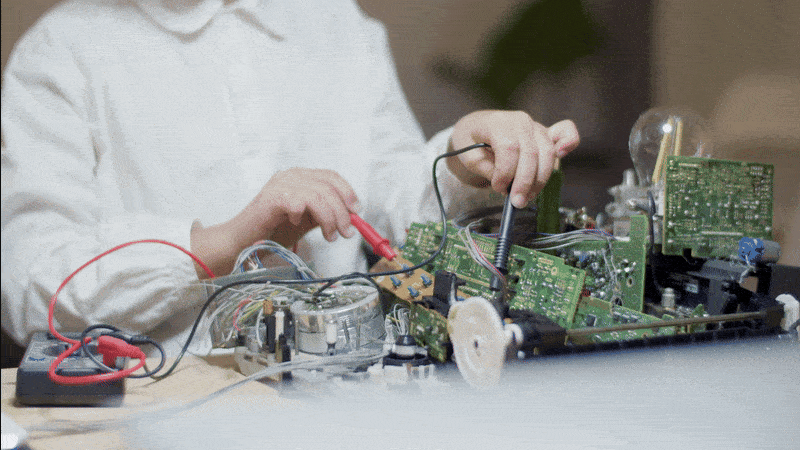_11zon.jpg)
Introduction:
The fields of healthcare and autonomous cars are just two of the many that have been disrupted by advancements in artificial intelligence (AI) and machine learning (ML). By delivering specialized hardware acceleration, Application-Specific Integrated Circuits, or ASICs for short, play a crucial part in enabling the efficient execution of artificial intelligence and machine learning algorithms. The verification of these complicated ASIC designs, on the other hand, presents a one-of-a-kind set of hurdles on account of the sophisticated architectures and stringent performance requirements of the designs. In this blog post, we will analyze the challenges and potential in ASIC verification for artificial intelligence and machine learning applications, as well as highlight the solutions that may be used to meet such issues and opportunities.
ASIC Verification Obstacles for Artificial Intelligence and Machine Learning
Complexity of the Algorithm: Artificial intelligence (AI) and machine learning (ML) algorithms are typically quite difficult to understand since they involve elaborate mathematical computations, deep neural networks, and sophisticated data structures. A great amount of work needs to be done in order to ensure that these algorithms are being correctly implemented in hardware. Because of the sheer complexity of these algorithms, considerable verification efforts are required in order to verify that the findings are accurate and dependable.
ASIC designs for artificial intelligence and machine learning applications are often massive and detailed, comprising a large number of processing units, memory hierarchies, and interconnects. This results in a high level of design complexity. It is a substantial difficulty to verify the functionality and performance of designs in this category while adhering to strict time-to-market constraints. In order to verify that the system is robust, the process of verification needs to encompass a wide variety of functional scenarios, including edge cases.
Optimization of Performance and Power: Artificial intelligence and machine learning applications call for ASICs that combine high performance with low power consumption. In order to verify the speed and power optimization strategies implemented in the design, such as parallelism, pipelining, and memory access optimizations, advanced verification procedures are required. It is a difficult effort to ensure that the design can adhere to stringent power limits while yet meeting the performance goals that have been set.
Scalability: Artificial intelligence and machine learning applications frequently need ASIC architectures that are able to scale to manage massive datasets and intricate models. It is essential to validate the scalability of the architecture in order to guarantee that it is capable of processing a variety of workloads in an efficient manner. The verification procedure needs to take into account scalability-related difficulties, such as memory bandwidth, synchronization, and parallel processing that spans across numerous cores or clusters.
Verification Coverage: Due to the expansive design space and the requirement to investigate a wide variety of algorithmic situations, achieving complete verification coverage in AI and ML ASIC designs is a difficult task to do. When it comes to covering all of the possible input combinations and validating complicated dataflows, traditional verification approaches may not be up to the task. It is vital to develop creative ways in order to improve coverage and discover minor design issues. Some examples of such strategies include intelligent randomization, constrained-random testing, and directed verification.
Opportunities for Artificial Intelligence and Machine Learning in ASIC Verification:
Advanced Verification Methodologies: Because of the difficulties in testing AI and ML ASICs, advanced verification methodologies have been developed. The verification process can be made more effective and efficient with the use of certain techniques. Some examples of these techniques include formal verification, assertion-based verification, and constrained-random testing. Utilizing these approaches makes it possible to perform exhaustive verification of the intricate algorithms and structures that are involved in the design of AI and ML systems.
Emulation and Prototyping: Platforms for emulation and prototyping offer options to accelerate the verification of artificial intelligence and machine learning ASICs. These platforms make it possible to do early integration and validation of the ASIC design with software stacks and workloads that are representative of the real world. Running the design on these platforms allows the designers to discover integration issues, analyze performance, and fine-tune the interface between the hardware and software, which ultimately shortens the total verification period.
Automating the development of Intelligent Testbenches: Artificial intelligence techniques can be used to automate the development of intelligent testbenches for ASIC verification. Algorithms that learn from machine data can do a design analysis and produce relevant stimuli with which to exercise important paths, corner cases, and performance-sensitive scenarios. Intelligent testbench automation improves verification efficiency by directing attention to the most important aspects of the design while simultaneously cutting down on the amount of manual labor required.
FPGA prototypes make it possible to quickly execute the design on actual hardware, which enables real-world workload analysis as well as early performance estimation. Accelerators built into hardware, such as graphics processing units (GPUs), can be utilized to speed up certain computing activities, making it easier to verify AI and machine learning algorithms.
Collaboration and Ecosystem: The verification of AI and ML ASICs calls for the participation of software engineers, hardware designers, and verification teams in a collaborative effort. The development of a robust ecosystem as well as a framework for collaborative effort ensures effective communication, the sharing of knowledge, and the utilization of expertise. Verification engineers are able to get insights into algorithmic needs through close collaboration with subject matter experts in the AI and ML domains. This helps to optimize the verification process.
Conclusion:
The use of AI and ML in applications that require ASIC verification poses a number of obstacles as well as opportunities. There are a number of key obstacles, some of which include the complexity of the algorithms, a high level of design complexity, performance optimization, scalability, and verification coverage. Nevertheless, these issues can be efficiently solved by utilizing advanced verification approaches, emulation and prototype platforms, intelligent testbench automation, hardware-assisted verification, and collaboration within the ecosystem. As AI and ML continue to make strides forward, verification procedures for ASICs will also advance, paving the way for the creation of more effective and trustworthy ASIC designs to fuel the growth of AI-driven applications in the future.

Why VLSIFIRST Is the Best Career Launchpad for ECE, EEE & CSE Graduates
Discover why ECE, EEE, and CSE graduates choose VLSIFIRST for high-paying VLSI careers. Learn how industry-ready training, projects, and placements accelerate your journey.

Engineering Completed? How VLSIFIRST Helps You Enter VLSI Faster
Discover how VLSIFIRST helps engineering graduates fast-track their VLSI careers with industry-ready training, projects, mentorship, and job-oriented skill development.

Clock Gating vs Power Gating: Implementation, RTL Flow & Verification Guide
Learn how to implement clock gating and power gating with RTL design steps, backend changes, UPF flow, and a full verification checklist for efficient low-power VLSI design.
_11zon.jpg)
What to Do After Engineering? Why VLSIFIRST Leads Chip Design Careers
Discover why VLSIFIRST is becoming the top choice for engineering graduates pursuing VLSI and semiconductor careers. Explore job roles, growth, and industry-ready training benefits.

VLSI Career Roadmap for Engineering Graduates: Step-by-Step Guide
A complete VLSI career roadmap for engineering graduates. Learn skills, domains, tools, and steps to become a successful semiconductor engineer in the chip design industry.
Hours
Copyright 2025 © VLSI Technologies Private Limited
Designed and developed by KandraDigitalCopyright 2025 © VLSI Technologies Private Limited
Designed, Developed & Marketing by KandraDigital
